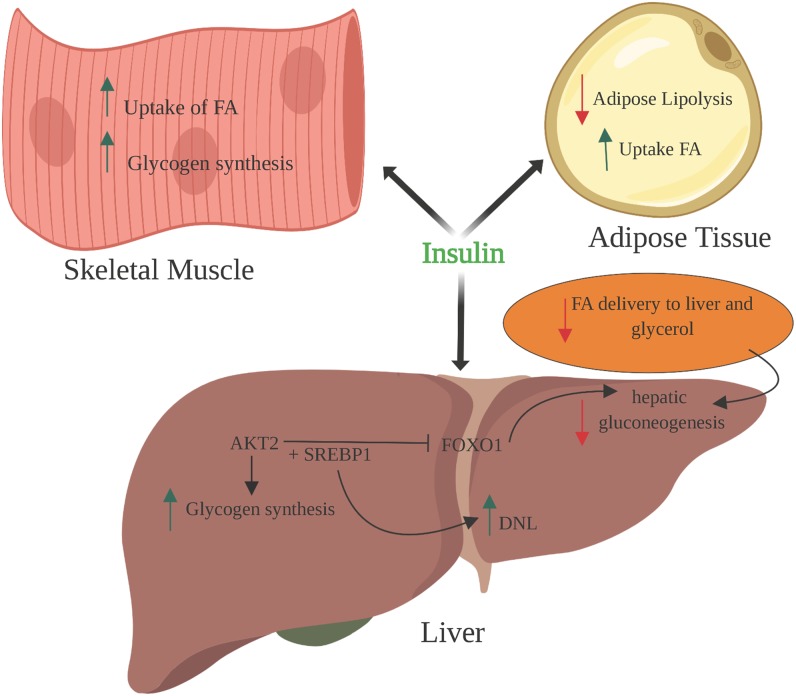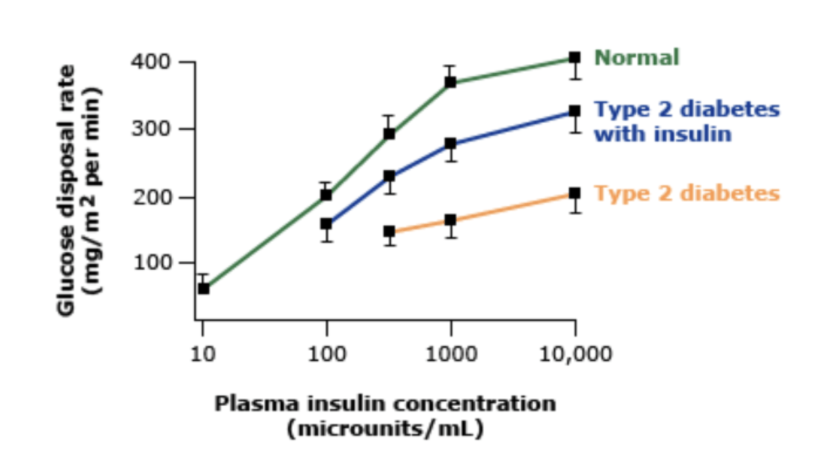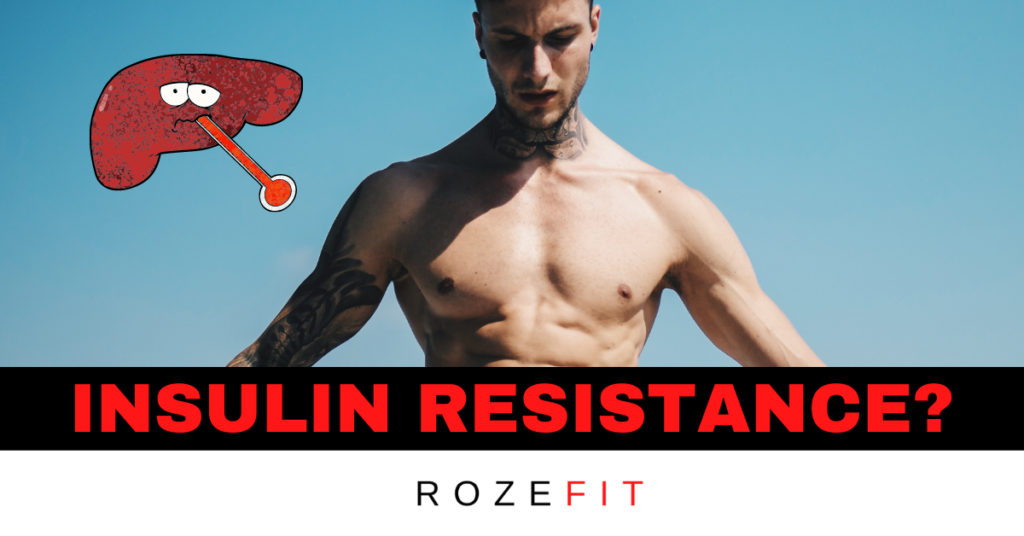Before we can define insulin resistance, we need to discuss the hormone insulin and how it relates to glucose metabolism.
Anytime you consume glucose from your food in the form of carbohydrates, your body produces insulin.
Insulin is a hormone that drives glucose into the muscle where it can be stored as glycogen.
Glycogen is stored energy that your body can call upon when it needs it.
Insulin also plays the role of increasing fatty acid uptake into fat cells.
Meaning it causes you to store fat in your fat cells.

The bottom line is this : Insulin resistance is an inability of the hormone insulin to carry out any of the aforementioned processes.
What Happens When You Are Insulin Resistant?
When someone is insulin resistant, they are no longer sensitive to the hormone which prevents the uptake of glucose by their muscle and liver cells.
This ultimately results in high blood sugar levels because the glucose is not being stored properly.
Therefore, it ends up circulating in your blood plasma longer than it should.
As you can see in this graph, the person who has normal insulin sensitivity is able to dispose of glucose properly.

However, as you can see above, the person with type 2 diabetes who is by definition insulin resistant, is unable to dispose of glucose properly.
By the way, the primary clinical manifestation of insulin resistance is type 2 diabetes.
Remember, type 2 diabetes is a disease characterized by the impairment of glucose regulation.
So now that you know what insulin resistance is, how do you know if you have it?
Do You Have Insulin Resistance?
Well, there are several ways to find out and I’m going to go through a few methods.
The first method is what I consider the gold standard method and that is an oral glucose tolerance test.
You have to ask your doctor for this test and it will be carried out in their office.
Unfortunately, they often reserve this test for people who already present with high blood sugar so make sure you advocate for yourself if you want to get this test done.
Basically, you will show up at the doctor’s office and they will take a blood sample to get a baseline blood glucose and insulin level.
Then you will ingest around 75 grams of glucose and they will draw blood a couple of times over a two-hour window and check your glucose and insulin levels.
If you are insulin resistant, your blood sugar levels will stay high indicating that insulin was unable to properly clear the glucose and shuttle it into your muscle cells.
At the two-hour mark, if your blood sugar is below 140mg/dL, you have a normal response.
If it is between 140 and 199, you have pre-type 2 diabetes.
And if it is above 200, you have type 2 diabetes.
The next way that you can simply determine if you have insulin resistance is by looking at the criteria for metabolic syndrome.
I made a video about the 5 criteria for metabolic syndrome which you can watch below.
If you meet any of the criteria for metabolic syndrome, there is a high likelihood that you also have insulin resistance.
That’s because insulin resistance sits at the root cause of metabolic syndrome.
So be sure to watch that video to see if you meet any of the 5 criteria for metabolic syndrome.
So let’s say that you have insulin resistance or meet any of the criteria for metabolic syndrome.
How to Reverse Metabolic Syndrome
What can you do about it?
Well, the great news is – it is all reversible.
A study published in arguably the most prestigious medical journal – The New England Journal of Medicine looked at how a single bout of exercise affected insulin sensitivity and glucose disposal in insulin-resistant individuals.

The study found that just one 45-minute bout of aerobic exercise caused the muscle of the insulin-resistant individuals to behave like that of an insulin-sensitive individual.
In other words, it boosted insulin sensitivity and glucose disposal.

This means you can use aerobic exercise to reverse insulin resistance and lower your blood sugar levels.
I made a video about a type of aerobic exercise called zone 2 training which specifically reverses insulin resistance and lowers blood sugar levels.
You can learn about what zone 2 training is in the video below.
If you need any help at all with a strategy to reverse insulin resistance, high blood sugar levels, and obesity don’t hesitate to reach out in the comments below or send me an email.
I’m really passionate about helping people reclaim their metabolic health and I would be happy to help you along with your journey.
Cheers and we’ll see you next time!

